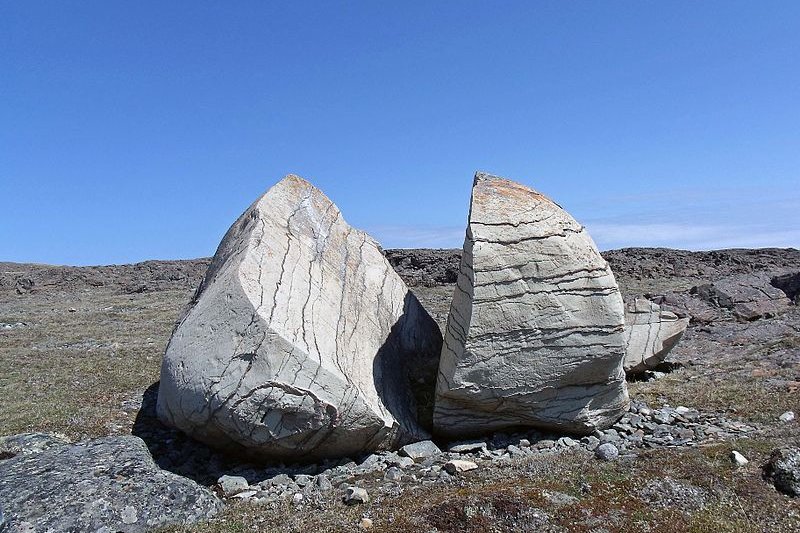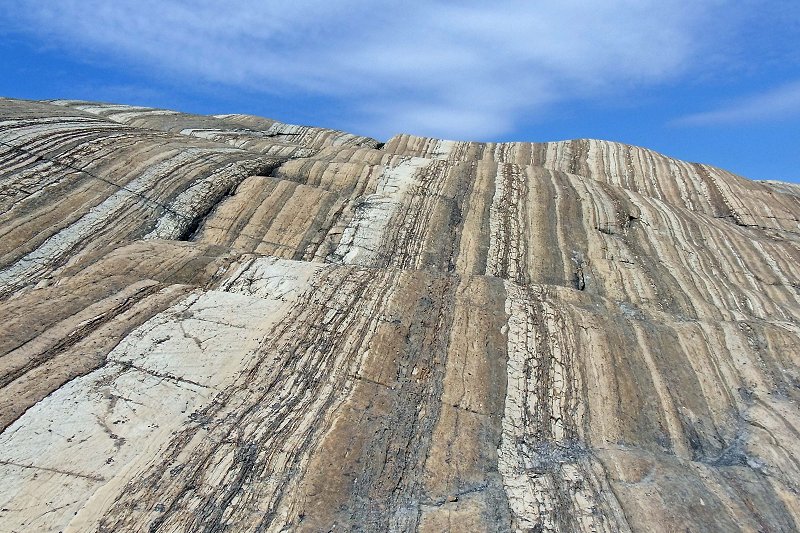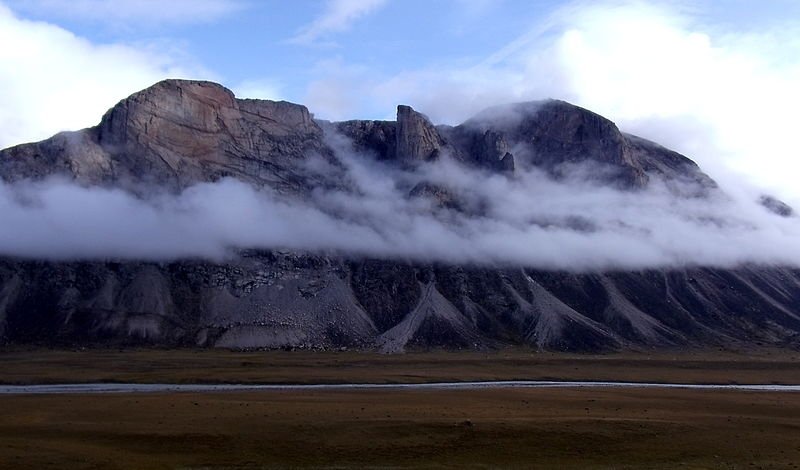 Rocks left by glacier outside Sanikilauq, Nunavut
Rocks left by glacier outside Sanikilauq, NunavutSource: https://commons.wikimedia.org/wiki/File:Sanikiluaq_rocks_-c.jpg
Author: Mike Beauregard

Cities and Sights in Nunavut
Nunavut (NU) is the largest territory of Canada. Created on 1 April, 1999 from a section of Northwest Territories, it is also the newest Canadian territory. Its creation marks a major change of Canadian maps since the incorporation of Newfoundland in 1949.
Nunavut covers 2,038,722 sq km (787,155 sq mi). It comprises mainland Northern Canada and most of the Canadian Arctic Archipelago. The name Nunavut was chosen as it means "our land" in the indigenous Inuktitut language, the most commonly spoken and understood language of the Inuit people, and recognized as one of the three officials language in Nunavut, alongside English and French.
Despite being the biggest Canadian territory, Nunavut has a population of only 32,000 people (2012 estimate). The capital and largest city in Nunavut is Iqaluit, which has a population of 6,700 people (2012 estimate). Nunavut has one seat on the 308-seat Canadian House of Commons and one seat on the 105-seat Senate of Canada.
 2-billion-year-old sedimentary rocks outside Sanikilauq, Nunavut
2-billion-year-old sedimentary rocks outside Sanikilauq, NunavutSource: https://commons.wikimedia.org/wiki/File:Sanikiluaq_rocks.jpg
Author: Mike Beauregard

Indigenous groups have been living in the Nunavut area for at least four thousand years. The Vikings may have arrived and traded with them by the 9th century AD. Written record of European exploration of Nunavut began only in 1575, when English explorer Martin Frobisher led an expedition into the area.
During the Cold War, the federal government of Canada forcefully relocated the Inuit from their traditional homeland to Resolute and Grise Fiord, an act that caused much suffering to the native population. This action was documented in a report entitled The High Arctic Relocation: A Report on the 1953-55 Relocation which resulted in the government paying compensation to those affected and their next-of-kin.
 Auyuittuq National Park
Auyuittuq National ParkSource: https://commons.wikimedia.org/wiki/File:Auyuittuq_National_Park,_Baffin_Island,_Nunavut_-b.jpg
Author: Mike Beauregard

In 1976, the Inuit governing body had a negotiation with the Canadian government, pressing for a separate territory for the Inuit. A plebiscite taken in the Northwest Territories showed that the majority of its residents were in favor. This led to a land claims agreement ratified by almost 85% of the voters in the soon-to-be-created Nunavut. Finally Nunavut Territory was established on 1 April, 1999.
Visiting Nunavut
Access to Nunavut is by air, as the area does not have road or rail connections. Iqaluit receives flights by Canadian North from Edmonton, Calgary and Ottawa while First Air flies from Montreal, Ottawa and Edmonton.Towns in Nunavut
- Iqaluit - capital
 Latest updates on Penang Travel Tips
Latest updates on Penang Travel Tips

Copyright © 2003-2025 Timothy Tye. All Rights Reserved.

 Go Back
Go Back